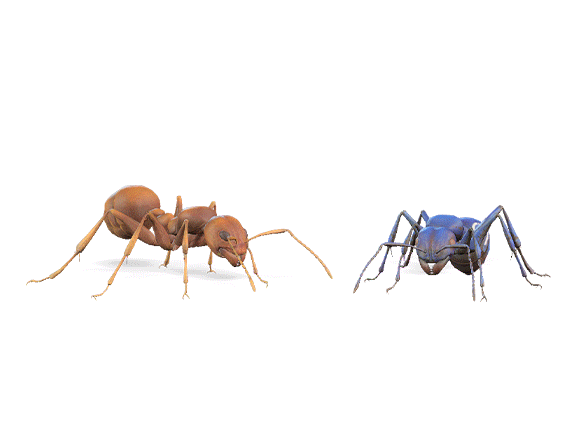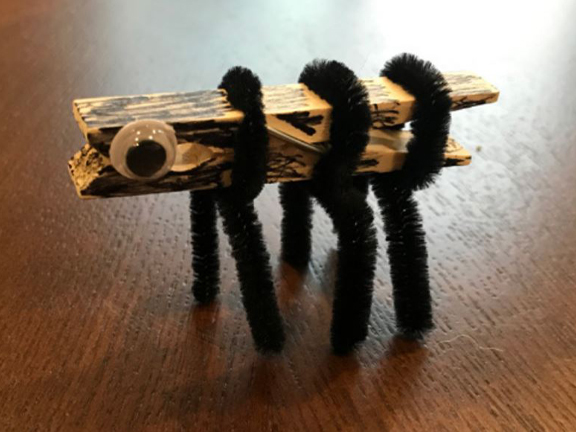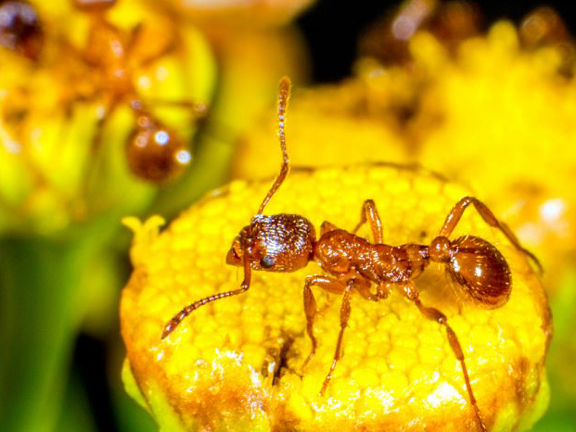Pollinators: Ants
About the Activity
Explore the role ants play in the fascinating process of pollination.
Start your journey through 4-H Pollinators by learning about ants and the role they play in pollination and how they work as a community. They are hard workers! Get to work making your own craft ant as you get to know these small but mighty insects.

Materials
These simple materials will get you started.
mini clothes pin
1 pipe cleaner of the same color cut into 6 equal pieces, 2 inches each
2 googly eyes
Elmer's glue
disposable table covering
Activity Steps
Follow these simple steps to create your ant.
Before you start the activity, think about this amazing fact: Ants have been around longer than the dinosaurs. There are lots of different kinds of ants: 22,000 different species, with many living in the rain forests.
Like butterflies, ants go through three life cycles: larva, cocoon or pupa, and then they become an adult ant.
Glue all six legs onto the clothespin (three on each side), starting around the hinge and going to the rear. Leave room at the front for the ant’s head.

 Did you know?
Did you know?Ants aren’t as good of pollinators as butterflies and bees because they can’t fly from flower to flower (though some types of ants have wings). But they still love nectar.
Ants have five main body parts: abdomen, thorax, head, antennas, and legs, of which they have six. The thorax is where the ant’s six legs attach and the ant’s abdomen is at its back end.
 Did you know?
Did you know?An ant has two stomachs in its abdomen? One for energy and fuel for itself, and one to store food for other ants. Ants have two antennas. The antennas help them smell, touch, taste and hear. To communicate with each other, ants touch their antennas together.
Allow to dry. Then glue the googly eyes on the front sides.
In addition to nectar, ants eat plants and animals, too, meaning that they are omnivores. Like you, ants drink water, eat seeds and meat. They also eat fungus. Eww!
If the legs won’t stick by gluing them, cut 3 four-inch strips of the pipe cleaners, and wrap them around the clothespin, twisting them underneath, then bending the legs downward (see image). And if your clothespin isn’t a dark color, like an ant, use a marker to color it – you can use black or red, if you want a red ant!
Enjoy your ant!
 Did you know?
Did you know?Ants can lift 20 times to 100 times their own bodyweight. That would be like you lifting a car!
Test Your Knowledge
See how well you know ants now and find great activities to try next!
Reflection Questions
Questions for your kids and teens.
How are ants different from bees and butterflies? How do they pollinate flowers differently?
Why is it important to have pollinators in nature? What would happen if ants didn’t pollinate flowers?
Other than pollination, what other roles do you think ants play in their ecosystems?
Investigate and Explore
Take what you’ve learned to the next level to learn more and explore the possibilities.
It’s not just bees that are busy! Just like you, ants have chores: they build tunnels, grow food, take care of their family and their home. Ants are so busy, they don’t even sleep!
The next time you see an ant hill, think about the thousands of ants living in the maze of tunnels below the surface.
Want to learn even more about ants?
Download the 4-H Ant Guide and get to know these fascinating creatures better.





